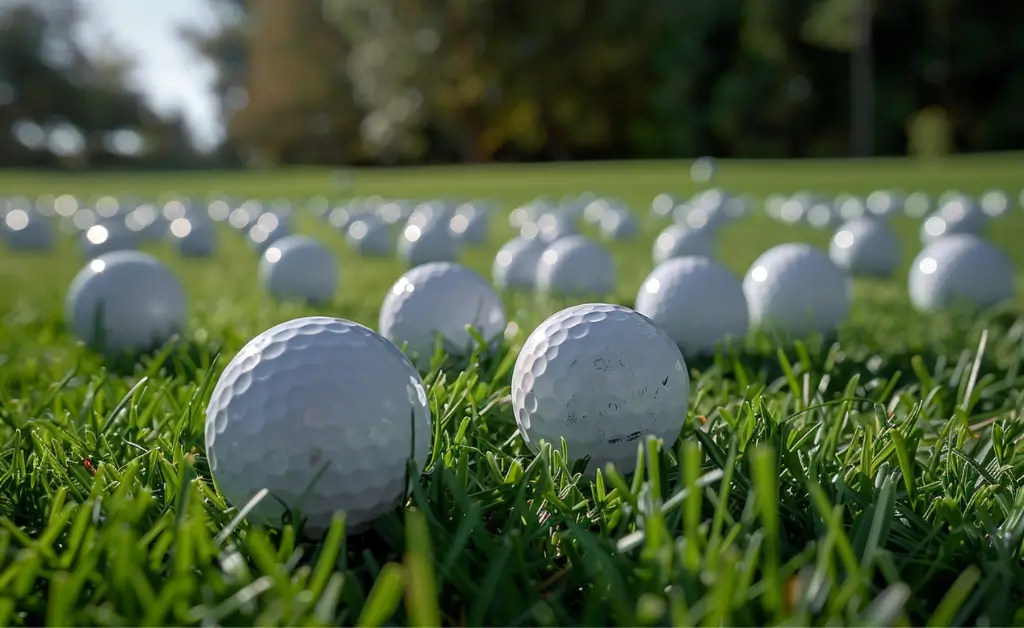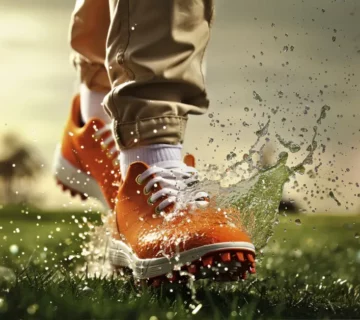Finding the right golf ball might seem like a small detail, but trust me, it can completely change how you play. Whether you’re brand new to the game or have years of tee time under your belt, choosing a golf ball that suits your style can mean the difference between a frustrating round and a fantastic one. With so many choices out there, it’s worth knowing what really matters before you stock up.
What Kind of Golf Ball Should You Use?
Not all golf balls are made equal. Different types are designed with different players in mind, and each comes with its own set of strengths.
Two-Piece Balls
These are the go-to for beginners or those who just want to keep things simple. Built for maximum distance and durability, two-piece balls are tough and forgiving—ideal for players still honing their swing. And let’s be honest, they won’t break the bank either.
Three-Piece Balls
If you’re somewhere in the middle of your golf journey, a three-piece ball might be your sweet spot. These balls give you more spin and feel around the green while still offering solid distance off the tee. A great pick if you’re starting to shape your shots and want more control.
Four and Five-Piece Balls
Now we’re getting into serious territory. These multi-layered balls are built for advanced players who care deeply about spin, precision, and overall performance. They offer the kind of feel and shot-shaping ability you see on TV and they demand a consistent swing to make the most of them.

Why Compression Matters
Here’s a term you’ll hear a lot: compression. Sounds technical, but it’s easy to understand. It just means how much the ball squishes when you hit it. A low-compression ball is softer and better suited for players with slower swing speeds, it compresses more easily, helping you launch the ball farther.
High-compression balls, on the other hand, are firmer and respond better to faster swings. They give skilled players more control, especially when distance isn’t the only goal.
So if you’re not swinging out of your shoes, a softer ball might actually help you out-hit your buddies.
Understanding Golf Ball Spin
Spin isn’t just for show, it directly affects how your shots behave. There are three main types of spin, and choosing the right one can really fine-tune your performance.
Low-Spin Balls
These reduce the amount of sidespin, which can help you keep the ball straighter. If you often find yourself hooking or slicing, a low-spin ball might just save you a few strokes (and some frustration).
Mid-Spin Balls
A balanced option for most golfers, mid-spin balls give you a little bit of everything, decent distance, moderate spin, and a reliable feel. Perfect for those who want a versatile ball without diving into the extremes.
High-Spin Balls
Favored by more skilled players, high-spin balls can stop on a dime near the green. If you love shaping shots or need that extra bit of finesse in your short game, this is where high-spin balls shine.
Feel vs. Durability: Striking a Balance
When people talk about the “feel” of a golf ball, they’re referring to the softness you sense at impact. Softer balls (usually made with urethane covers) feel nicer and give more spin—but they tend to scuff up more easily. If you don’t mind replacing them a bit more often, the enhanced performance is worth it.
Harder balls, often made from surlyn or ionomer, are built to last. They may not offer the buttery feel around the greens, but they’re tough and reliable—especially if you’re not worried about tour-level spin just yet.
Picking the Right Brand
Brand loyalty runs deep in golf, and for good reason. Some companies are known for specific qualities:
- Titleist is a favorite among pros and low-handicappers.
- Callaway often delivers distance and forgiveness in their ball designs.
- TaylorMade is known for innovation and all-around performance.
That said, don’t sleep on lesser-known brands either. Many newcomers are making quality balls that compete with the big dogs—at a fraction of the cost. If you’re on a budget or just enjoy testing new gear, it’s worth exploring.
Choosing a Golf Ball That Works for You
Here’s the truth: no one ball is perfect for everyone. The right choice depends on your playing style, swing speed, and even your goals on the course. Some players want raw distance, others want a buttery soft touch around the green.
Your best bet? Try a few different kinds. Play a few rounds, notice how the ball behaves off the tee, out of the rough, and around the green. Sometimes the ball that feels right in your hand isn’t the one that performs best on the course.
FAQs
If you’re just starting out, go for a two-piece ball. They’re tough, go long off the tee, and are usually easier on your wallet. You won’t get as much spin or feel, but they’ll definitely help you focus on building your swing.
Your swing speed plays a huge role. Slower swing speeds do better with low-compression balls because they compress more and travel farther. Faster swing speeds can handle high-compression balls for more control and precision.
It depends on your skill level. For beginners or casual players, pricey balls might not be worth it. But for experienced golfers, premium balls can offer better spin, feel, and control, especially around the greens.
Most modern golf balls can last a few rounds if you don’t lose them or scuff them badly. Softer, urethane-covered balls wear out faster, while harder, ionomer-covered ones are more durable.
Technically, yes but it’s not ideal. Switching balls mid-round can throw off your consistency. Each type behaves differently, so it’s better to stick with the same model during a game to keep your performance steady.






